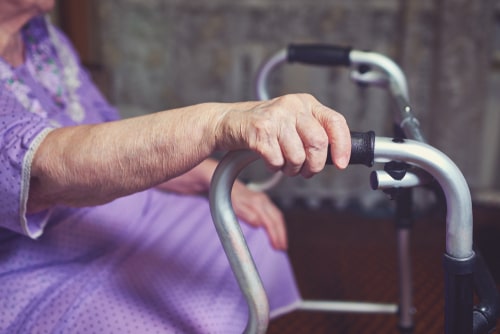Fall Prevention & Home Safety Tool Kit
Practical Steps Towards Senior Safety
Falls are one of the biggest threats to the safety of older adults. In fact, one third of Americans above the age of 65 falls each year.
While falls are the leading cause of fatal injury in older adults, they don’t have to be. By putting prevention measures in place throughout your home and lifestyle, you can stop falling from becoming a near-inevitable part of the aging process.
We’ve gathered some common questions and resources about how best to avoid hospital readmission. Continue reading to learn more, or find specific answers and articles below:
Table of Contents
Practical Resources for Preventing Falls
How Dangerous are Falls?
Falls are not inherently dangerous, but complications from a fall can severely impact the health and wellbeing of any senior. Even minor falls can easily become one of the most life-threatening scenarios for aging loved ones if not treated properly.
Pre-existing medical conditions, frailty, and other common issues associated with advanced age seriously limit the patient’s overall ability to recover, making any injury more dangerous by default. While not all falls are fatal, the risks associated with the complications from a fall can be enough to put any older patient down for the count.
The biggest long-term danger associated with fall-related injuries is the loss of dexterity, mobility, and independence. Even minor trauma, like a bruise, sprain, or fracture can cause hospitalization in older patients, so the utmost caution should be taken.
Why are Falls Common Among Seniors?
A wide range of conditions affecting seniors can make them more prone to falls.
For example, movement and balance issues make any terrain more difficult and create a greater risk of falling no matter the age. Additionally, sensory factors such as problems with eyesight, hearing, or touch can harm a senior’s ability to properly perceive and interact with the environment around them.
This decrease in spatial awareness can easily lead to opportunities for falls to occur.
What are the biggest risk factors for falling?
The biggest concern for any fall is usually an environmental hazard like a spill, ledge, or any other item that would cause the fall.
If the fall does not occur in a relatively open area, the introduction of hazardous objects like sharp corners or hard surfaces can add an even greater risk to the landing.
How can I prevent falls for seniors?
There are several ways to keep your loved ones safe from the risk of falls both in and outside of the home. While not every measure needs to be taken, it is important to carefully consider your health and surroundings to make the best choices for you or your loved one.
Here are some of the top methods for fall prevention:
Hospitals are required by Medicare to provide discharge planning for inpatients when necessary. The loved ones of patients can take an active role in discharge planning by choosing the best home care solutions:
-
Rehab and therapy
These are great methods for building strength following an injury or illness and can help you regain and even surpass your former strength and vigor.
-
In-home care
This is a great option for those who may not be as independent in the home as they used to be, but still want to remain at home. In-home care plans vary in complexity and can include simple exercises or live-in assistance. Having an extra set of hands around the house is a great way to improve the well-being of seniors while better avoiding situations that lead to falls.
-
Active lifestyle
Building strength through exercise not only provides the ability to avoid most falls, but it also has a huge impact on the overall health and happiness of seniors!
-
Creating a safe in-home environment
There is a huge opportunity to set up any home for senior success and safety. Even small changes like improved lighting and railing can be cheap, effective ways to improve the independence and mobility of you or your family.
To help get you started on some small changes in your home, check out this guide to some cheap, easy home improvement ideas for fall prevention!
-
Using assistive devices
Devices like canes and walkers are aimed at increasing the stability and confidence of seniors when moving around. Whether it is at home or abroad, there can be a huge improvement with this simple change.
How do I keep my home safe for seniors?
Environmental hazards are one of the biggest causes of additional accidents and injury upon a fall, so taking care of potential dangers in your home can be an excellent way to improve the independence of you or your loved one throughout the whole home!
Here are some common hazards to protect against:
-
Sharp corners
These are an extremely dangerous factor during falls and can even turn a minor fall into a deadly event. Take some time to look around your home and find these dangerous areas!
-
Hard items or surfaces
While this does not mean your whole home is in need of “senior-proofing”, extremely tough surfaces like stone, hardwood, or metals can intensify the injuries sustained from falling.
-
Active lifestyle
Building strength through exercise not only provides the ability to avoid most falls, but it also has a huge impact on the overall health and happiness of seniors!
-
Dark areas
These areas can be a catalyst for seniors to trip and fall. Lighting up your spaces can help keep them stay safe and avoid catch points around the house.
-
Slippery surfaces
Whether is it naturally slick or slippery when wet, these surfaces can turn a simple spill in the home into a greater risk for your loved ones.
Big changes like this don’t just make things safer. They often breathe new life into the home. Check out one of our client home revival stories to learn more about how impactful this can be.
What do I do when a fall occurs?
A fall can be a very scary event, but taking the right steps immediately following can dramatically reduce the chances of complications further down the road.
If a fall is serious, you should always contact the proper healthcare professionals about the incident.
To help in caring for a senior that has recently fallen, here are some steps to safely help a loved one recover from a fall:
-
Stay calm
This is a dangerous time, but your response can make a huge difference for the better. Remaining calm and focused will help guarantee success.
-
Examine for injuries
If there is a serious injury, confirm it and call for help immediately. If there is bleeding or the senior is unresponsive, then every second of response time matters.
-
Identify pain points
If the senior is responsive, or partially injured, identify the areas that are hurting and use that information to better plan for how to help them up.
-
Call for help
If any injury requires any type of non-emergency medical attention, call for help and get the proper care. It is okay to admit that you are not able to fully help, but will help the senior get the help they need.
How do I help a senior get up after a fall?
After you confirm the extent of the injuries sustained by the fall, it is time to see if you or the person who has fallen can get up. Remember, you should be helping them up and not lifting them.
If the person who has fallen is safe, but cannot get up with assistance, it is best to call for help to make sure no additional injuries occur.
These are the steps for helping a senior up after a fall::
-
Find (and get next to) a raised surface for support
This is going to be used in empowering the person who has fallen to better get up on their own by providing an additional point of contact. Adding points of contact inherently makes things more stable and helps you or your loved one mitigate the risk of falling again.
-
Roll to the side
Depending on the extent of the fall, there may have been mild to moderate injury to the back or neck. Sitting up from a supine position can sometimes add undue stress to the neck, core, and back. To avoid this stress, roll over and assist the injured senior in pushing themselves up. This will keep the back aligned and in better condition.
-
Assist them onto hands and knees
Points of contact are key here, and being on your hands and knees adds a total of four points between the senior and the ground, making them extremely stable. If the person who has fallen needs a break this is a great point to take a short rest and for you to communicate the next steps.
-
Use supports to get one foot on the ground
Using one or both hands, help the fallen person push themselves up using the raised surface and bring the strongest leg forward. The goal is to get one foot flat on the ground to assist in getting all the way up.
-
Push on surfaces to rise up
After a foot is already on the ground, it is time to get up. Help the senior push themselves up with both hands and a foot so they begin to rise up. Support and assist, but do not fully lift them as they get up. If they are still facing the raised surface upon getting up, they must turn around before sitting down.
-
Take a seat
This is a time to rest and recover some strength while the proper people are contacted. A serious fall can be a traumatic experience for many, so taking the time to rest after getting to a better position can be a great staging area for the next steps.
-
Notify your doctor
Even if it is just a minor fall, it is best to notify your primary care physician of the fall. It can change their recommendations about preventative care and treatment to help better mitigate the risk of another fall.
To stay updated on the latest articles and
industry news, subscribe to our newsletter!
Practical Resources for Preventing Falls
Rehab And Therapy
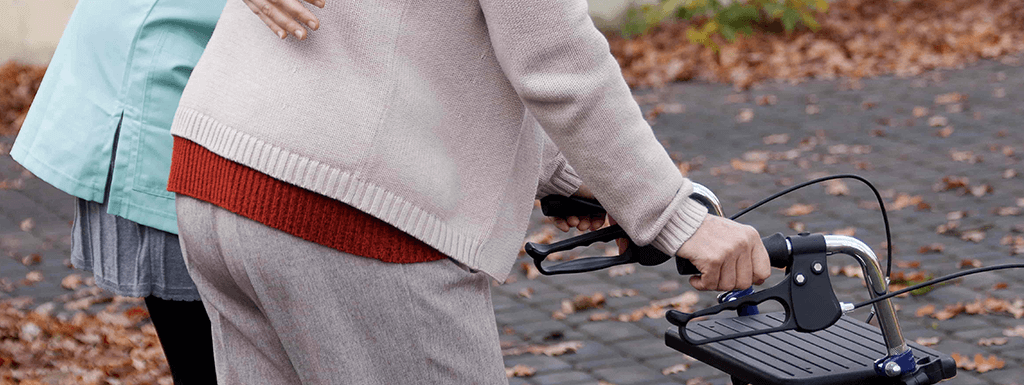
Preventative or corrective therapy is a great way to minimize the risks of falls. Staying strong enough to remain independent will not only give you the mobility and balance to keep you or your loved one safe, but it can also bring added dexterity that will make household tasks more manageable.
The best part about preventative and corrective care is that it can start at any point in one’s health journey.
For example, if you or a loved one have recently fallen and sustained a minor injury that has hindered your movement, it may be good to consider short-term rehabilitation.
Short-term rehab is a style of treatment usually consisting of around-the-clock care aimed at improving one’s strength and mobility following an injury, illness, or surgery. Following a well-formed rehabilitation plan will help you return to a better position of health, especially if you have been hospitalized recently for a fall-related injury.
If you would like more information on how impactful rehabilitation can be, read our blog on the value of short-term rehab!
In addition to short-term rehabilitation, more preventative care and lifestyle modifications can be made to improve one’s health and wellbeing.
Exercise, including strength training and cardio, can vastly improve one’s condition and long-term outlook. In fact, consistent exercise not only improves strength and balance but can also prevent and delay the onset of diseases and cognitive issues.
For more specific treatment, physical and occupational therapy can help with overall mobility and increase in-home independence when it comes to chores and basic labor around the house. While it is similar to the care receives in short-term rehabilitation, the frequency of therapy visits can be sparse and works best for individuals seeking long-term recovery from injuries or those looking to prevent a loss of strength for in-home tasks.
All together, short-term rehab, physical and occupational therapy, and exercise help strengthen and repair the body so that you or a loved one are less likely to encounter a fall or are strong enough to recover quickly.
In-home Care
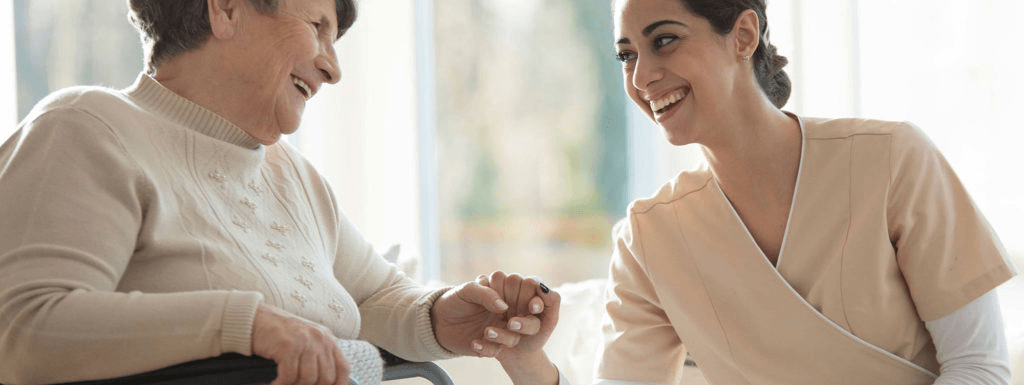
The addition of an in-home caregiver could be a great way to increase independence while recovering from a fall.
Having that extra set of hands around the house is meant to help and make difficult or mundane tasks easier to handle, and is especially useful if serious exercise or rehab is not required or even a possibility.
For example, if you or a loved one has recently been discharged from the hospital and experiencing trouble with tasks at home, it could be time to consider hiring a home health aide or caregiver.
Most in-home care companies have highly customizable plans ranging from short visits all the way to live-in caregivers so their impact on your life and independence is as minimal as possible.
Basic plans can include a driver for trips to the grocery store or assistance with daily chores, medication reminders, or simple therapeutic activities. These tasks can also be performed by a willing family member under instructions from a healthcare professional.
If a senior’s condition is more difficult, the addition of a live-in caregiver that assists in movement around the house is one of the safest ways to prevent in-home falls.
Regardless of the level of assistance needed, in-home care can drastically improve the mobility of a senior in their own home. For more information on fall prevention for caregivers, read our fall prevention how-to guide!
Creating A Safe In-home Environment
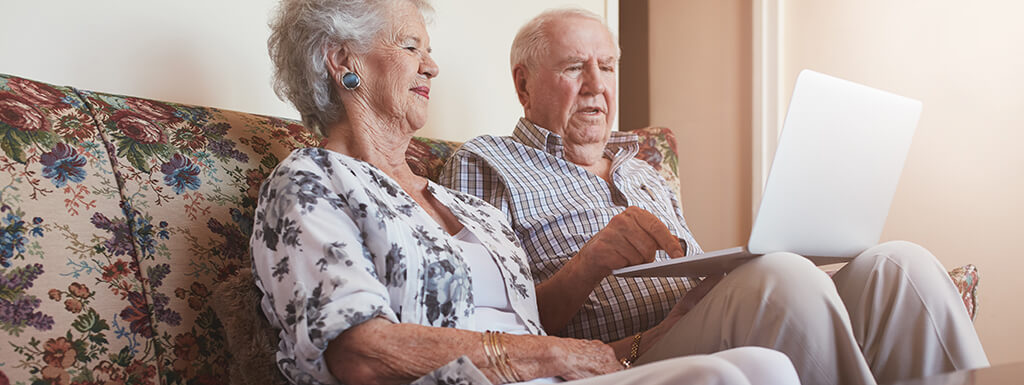
Whether you or your loved one are recently returning from the hospital or have just started having mobility issues, addressing the safety of your home is a vital step in keeping seniors safe from serious falls.
Most in-home falls occur in busy areas, like kitchens, dining rooms, and bedrooms rather than areas that require climbing. Protection in these more difficult areas is key to mitigating serious falls in the home.
Here are some recommendations from our care team to make the home a safer place for seniors:
- Remove home hazards: A lot of items in the home can add a much higher risk to in-home falls. Sharp corners, extremely hard surfaces, or raised edges on the ground can trip up seniors or creating dangerous landing areas. Adding protection, padding, or simply removing these items can go a long way towards making your home a safer place.
- Light up your living space: Improving the brightness of your current fixtures or adding additional lighting in difficult places will help you avoid the pitfalls in your home. Lighting for rails and stairs, much like in a movie theater, make traversing the home much easier, especially for seniors that have difficulty seeing and moving around. Even the move to higher wattage bulbs will bring more light to your home and is a relatively cheap way to improve the safety of your home.
- Wear supportive footwear: Steady footing is a key player in maintaining high mobility. When combined with assistive devices, you’ll be on your way to safe and stable travel!
- Use assistive devices (canes, walkers, etc.): Even though you may believe some of these tools to be stigmatized, assistive devices bring stability to your daily life by adding extra points of contact between you and the ground. Furthermore, the addition of a rail along walls and stairways will serve the same purpose in more strenuous areas of the home. The best part is that assistive devices can be taken out of the home, making even the most rugged terrain more accessible.
For more resources on how to keep the home safe, please read our In-home Safety Checklist or check out this home safety makeover story!
Monitoring Or Alert Devices
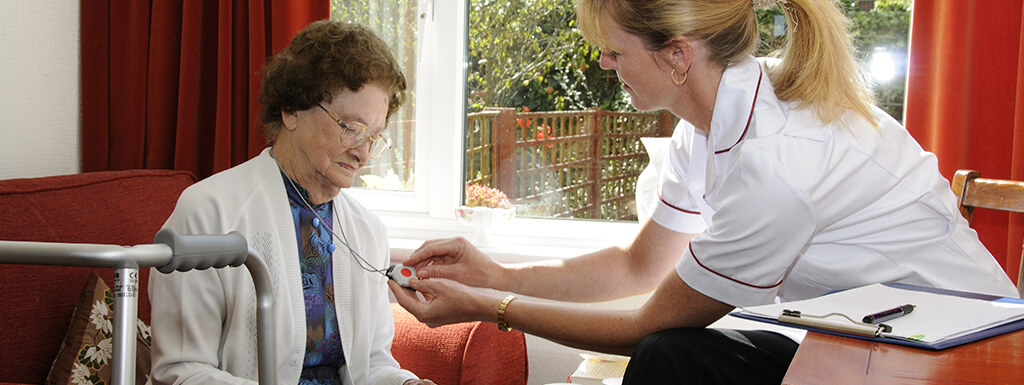
We’ve all seen the commercials, but the reality of an “I’ve fallen and I can’t get up!” scenario is very serious.
If you or your aging loved ones are relatively independent and do not require highly attentive care, the use of monitoring or alert devices can easily be the difference between life and death.
While not necessarily used to prevent falls, good monitoring tools like Life Alert or other personal emergency response systems (PERS) act as the first line of defense when a fall does occur.
People innately want to care for their loved ones, but depending on a senior’s medical condition, intensive care or a lot of help may not be needed. That’s why having that extra layer of safety can often be enough to increase your loved one’s independence and your peace of mind in one strong blow.
For more information on how personal emergency response systems can improve the independence of their users, please read our blog on medical alert systems!
Fall Prevention Services with
Westchester Family Care
Westchester Family Care is an industry leader in the in-home care field with fantastic home health aide services based in and around New York and Connecticut. To learn even more about the importance of fall prevention and how Westchester can help, visit our website below!

The Heartbreak of Transplantation Medicine
Many seniors get transplants each year without knowledge of potential side effects. It's important to know what to expect from a transplant.
